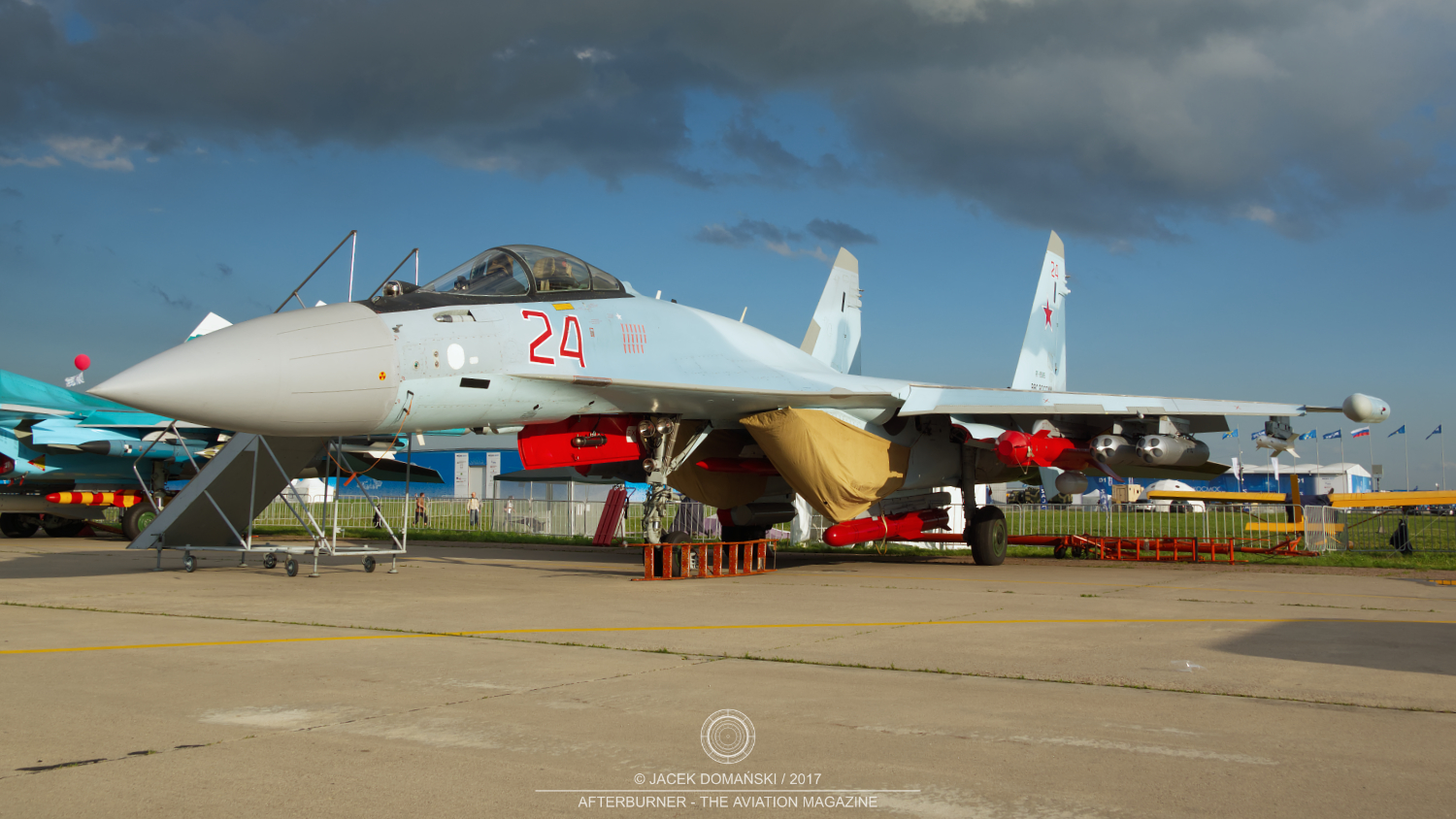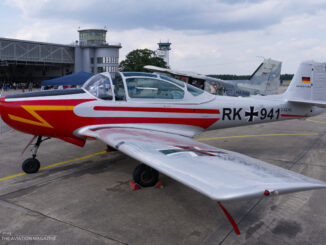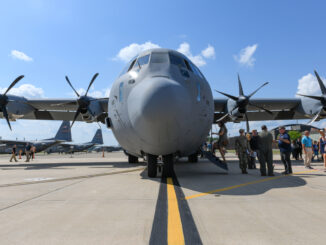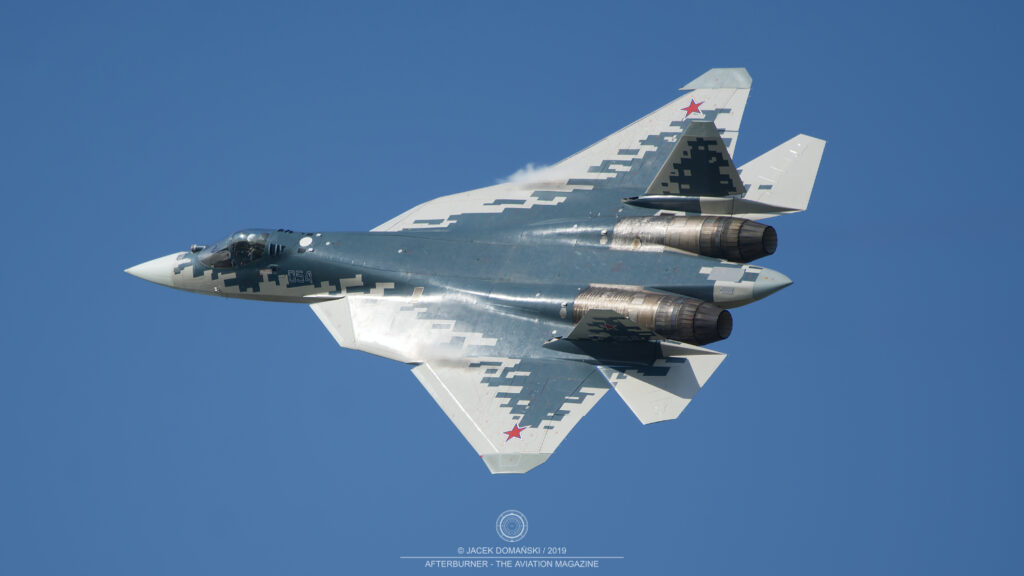 On 12th September 2024, the PJSC United Aircraft Corporation – UAC (Объединенная авиастроительная корпорация – ОАК), being a part of the Rostec corporation, officially informed about the new delivery of combat aircraft for the Russian Aerospace Forces (Воздушно-космические силы). It was not only the first delivery of Sukhoi Su-57 (NATO reporting name Felon) fighters this year, but also the first since September of 2023.
On 12th September 2024, the PJSC United Aircraft Corporation – UAC (Объединенная авиастроительная корпорация – ОАК), being a part of the Rostec corporation, officially informed about the new delivery of combat aircraft for the Russian Aerospace Forces (Воздушно-космические силы). It was not only the first delivery of Sukhoi Su-57 (NATO reporting name Felon) fighters this year, but also the first since September of 2023.
Today, only a few people remember May of 2019 and the then journey of Russian president, Vladimir Putin to Akhtubinsk. During the last part of his trip, the presidential Ilyushin Il-96-300PU was escorted by six 5th generation Su-57 fighter jets.
A common story, at that time frequently repeated by the Russian media, says Putin was very interested in the new aircraft when he saw them through the window. And was surprised they were only the prototypes, despite the fact that development programme of the new Russian fighter aircraft was launched already in 2001. According to a popular rumour, the Russian president got frustrated and ordered the Su-57 development programme to have the highest priority.
So much for the gossip story but the fact was that shortly after, during the International Military-Technical Forum ´Army-2019´, the official contract for delivery of seventy-six aircraft of that type was concluded. It meant almost five times more examples of the Su-57 to be built until 2028 than it was estimated in the previous development schedule.
The truth was the Russian aerospace industry was not very interested in the Su-57 development programme. As mentioned above, works on the aircraft were initiated in 2001, within the Prospective Aeronautical Complex of Front-line Aviation PAK FA (Перспективный авиационный комплекс фронтовой авиации ПАК ФА). The prototype of the aeroplane, designated T-50, was ready in 2009. In January of the next year, the new Russian fighter performed its maiden flight.
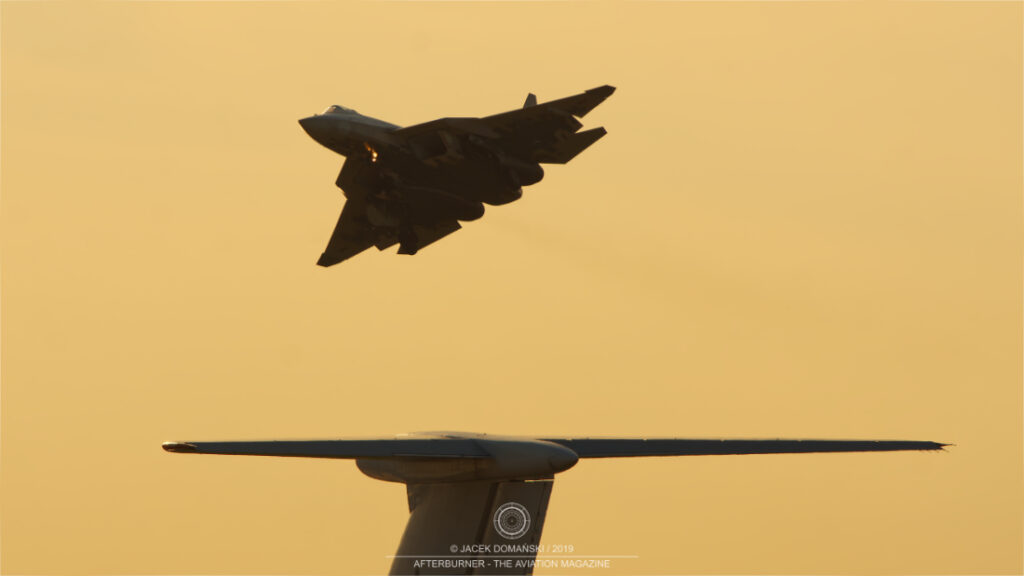
Initially, commencement of the serial production of the Su-57 was scheduled for 2015. The first batch of twenty-four aircraft had to be delivered until 2018, and another twenty-one examples by 2020. However, the programme suffered from several significant issues and got delayed. The new, revised delivery schedule mentioned only twelve fighters to be delivered until 2020 and large-scale production to be launched after 2025 (more about the Su-57 development in our article from June of 2019 – Southern Military District to get the first serial Su-57 multirole fighters).
Another problem facing the PAK FA programme was the engine. At the moment the development of the new Russian fighter was launched, there was no available powerplant in Russia to meet the required characteristics. The estimation was that aviation industry needed approximately ten to twelve years to develop such the engine.
Therefore, it was decided to equip the prototype and potential first production examples of the Su-57 with Saturn AL-41F1 / Izdeliye 117 (АЛ-41Ф1 / Изделие 117) powerplants. At the same time, development programme of ´engine of the second stage´, designated Izdeliye 30 (Изделие 30), was launched.
Nevertheless, it seemed the Russian aviation industry was not under any pressure with both the aforementioned development programmes. Several evaluation flights were performed, the Su-57 was repeatedly marketed during subsequent editions of the International Aviation and Space Salon (MAKS), and reportedly even tested in combat environment over Syria but, until the mid-2019, the only effect were the ten flying prototypes of the fighter. The same situation was with the engine. The Izdeliye 30 performed its first test run in 2016 but the date the Su-57 could be equipped with the new powerplant was unknown.
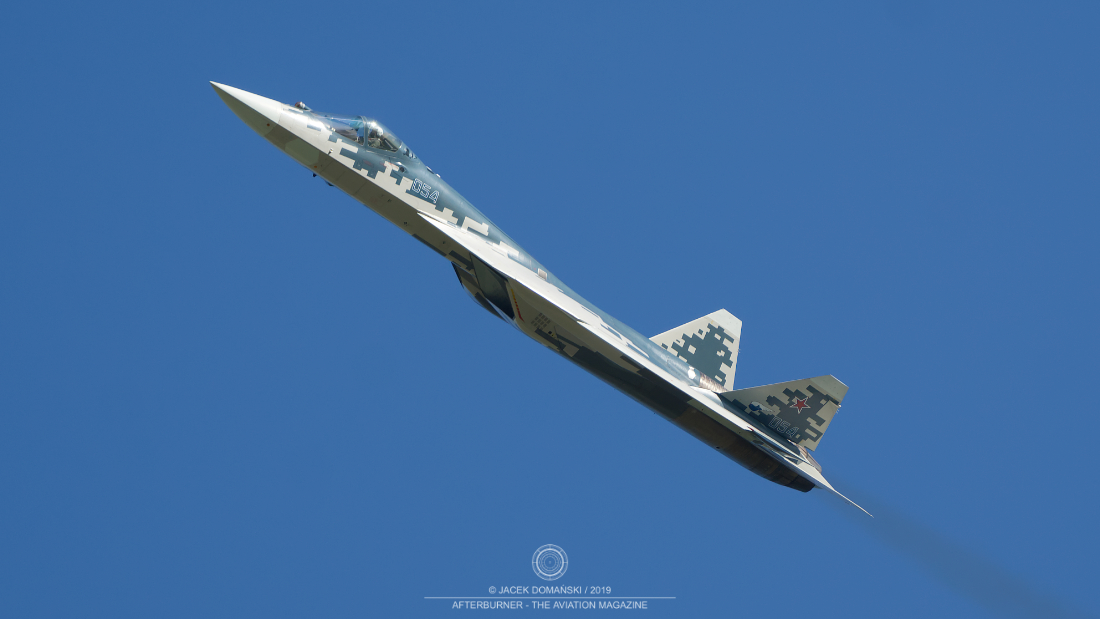
At the same time, the aviation manufacturers focused on deliveries of already developed aircraft, as well as modernization of older designs. Instead of switching to produce the 5th generation aeroplane, both Sukhoi and MiG created their new generation of aircraft, called ´4++´, including the Su-35S and MiG-35.
Situation changed after the aforementioned Putin´s visit to Akhtubinsk, the official presidential inspection of new weapon systems, including the Su-57 and the MiG-35. The development of the 5th generation aircraft gained new momentum, supported by the new governmental order for seventy-six aircraft.
The first two serial Su-57s were ready at the end of 2019, although they were made still in accordance with previous order from 2018. One of them crashed shortly after, on 24th December 2019. Pilot managed to eject and survived but the fighter was damaged beyond repair.
Therefore, the Russian Aerospace Forces officially received only one Su-57 in 2020, three more in 2021 and another six in 2022. The deliveries followed also in 2023, however – due to the new security policy of the Russian Ministry of Defence – the exact number of acquired aircraft was not disclosed (unofficial estimation says about up to twelve examples).
However, all the aircraft were delivered with the AL-41F1 engines, as the maiden flight of the Felon equipped with Izdeliye 30 powerplant was reported only at the beginning of 2024. Taking into account the fact that the Su-57 loses most of its potential ´stealth´ characteristics because of the engine, the aircraft were quickly nicknamed as the ´generation 4+++´.
The Su-57 delivery schedule initially mentioned twenty-four aircraft to be delivered in 2024. Although the number of fighters taken over by the Russian Aerospace Forces on 12th September was also not disclosed, there was speculation that it included only two or three aircraft. Therefore, current inventory of the operational Su-57 aircraft can be estimated at the level of less than twenty-five examples.

It should be also added here that the Ukrainian forces claim at least two Felons damaged during UAV attack on Akhtubinsk airfield in June of 2024. However, a military research centre is located there and, if information about the damage is true, they could be prototype or testbed aircraft, not the operational fighters.
On the other hand, the Russian Aerospace Forces informed the Su-57 are already used in combat operations in Ukraine. The first missions were reportedly flown in the mid-2022 and their number significantly increased this year. According to Russian press, at least one Ukrainian Su-27 was reportedly shot down by R-37 (NATO reporting name AA-13 Axehead), very-long-range air-to-air missile fired from the Su-57.
In conclusion, it should be pointed that deliveries of the Su-35S fighter aircraft to the Russian Aerospace Forces continue in larger quantities. Although the exact numbers are not officially disclosed, the UAC informed about five deliveries in 2023 and next two in previous months of 2024 (with estimated total number of up to twenty-four examples).
Reportedly, the Russian Aerospace Forces lost five to seven Su-35S aircraft during the conflict in Ukraine.
